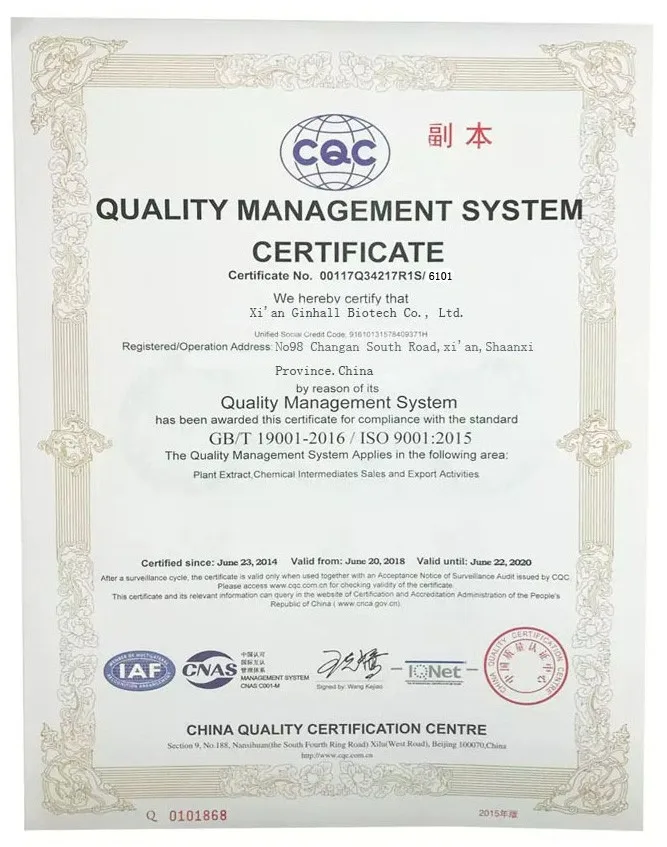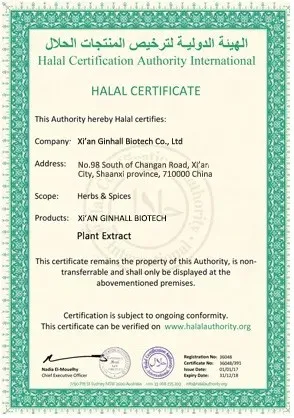Other recommendations for your business
Product Details
Lemon Balm Extract Melissa Melissa Officinalis Leaf Extract
Product Name: | Lemon Balm Extract | Payment: | L/C, T/T, Western Union |
Active Ingredient: | Rosemary Acid | Shipment: | DHL, FEDEX, TNT, EMS |
Appearance: | Brown Fine Powder | Shipping Time: | 3-5 Business Days |
Storage: | Cool and Dry | Packing: | 1kg/bag, 25kg/Drum |
Description
Lemon balm is native to Europe but is now grown all over the world. It is grown not only in herb gardens, but also in crops for medicine, cosmetics, and furniture polish manufacturing. The plant grows up to 70–150 cm tall. The leaves have a gentle lemon scent, related to mint. During summer, small white flowers full of nectar appear. These attract bees, hence the genus name Melissa (Greek for 'honey bee'). Its flavour comes from citronellal, geranial, linalyl acetate and caryophyllene. The leaves are very deeply wrinkled and range from dark green to yellowish green in color, depending on the soil and climate. The crushed leaves, when rubbed on the skin, are used as a repellant for mosquitos. Lemon balm extract is made from the leaves of the plant. Essential oils made from lemon balm leaves contain plant chemicals called terpenes, which play at least some role in the herb's relaxing and antiviral effects. Lemon balm essential oil is very popular in aromatherapy. Lemon balm also contains rosmarinic acid,which is the major compound responsible for GABA transaminase inhibition activity in lemon balm.
Function
1. Mild sedative, stress (anxiety) reduction and appetite improvment.
2. Modulate for mood and cognitive enhancement as well as sleep aid.
3. Pain relief, including menstrual cramps, headache and toothache.
4. Antioxidant and antitumor activity.
5. Antimicrobial, antiviral activity against a variety of viruses, including herpes simplex virus (HSV) and HIV-1.
6. Clear texture can be a good matte, shrink the pores.
2. Modulate for mood and cognitive enhancement as well as sleep aid.
3. Pain relief, including menstrual cramps, headache and toothache.
4. Antioxidant and antitumor activity.
5. Antimicrobial, antiviral activity against a variety of viruses, including herpes simplex virus (HSV) and HIV-1.
6. Clear texture can be a good matte, shrink the pores.
Application
1.Lemon Balm Extract, in health care product field, is used for promoting sleep and improving appetite.
2.Lemon Balm Extract, in pharmaceutical field, is frequently used as mild sedative agent to regulate mood and significantly increase calmness and alertness.
2.Lemon Balm Extract, in pharmaceutical field, is frequently used as mild sedative agent to regulate mood and significantly increase calmness and alertness.

Certifications



Factory View

Packing & Delivery

FAQ

Contact US
Supplier's popular products
Contact Supplier
We have more categories for you. lf you can't find the products you want above,just fill in the form and tell us whatproducts you want to import from China.



















